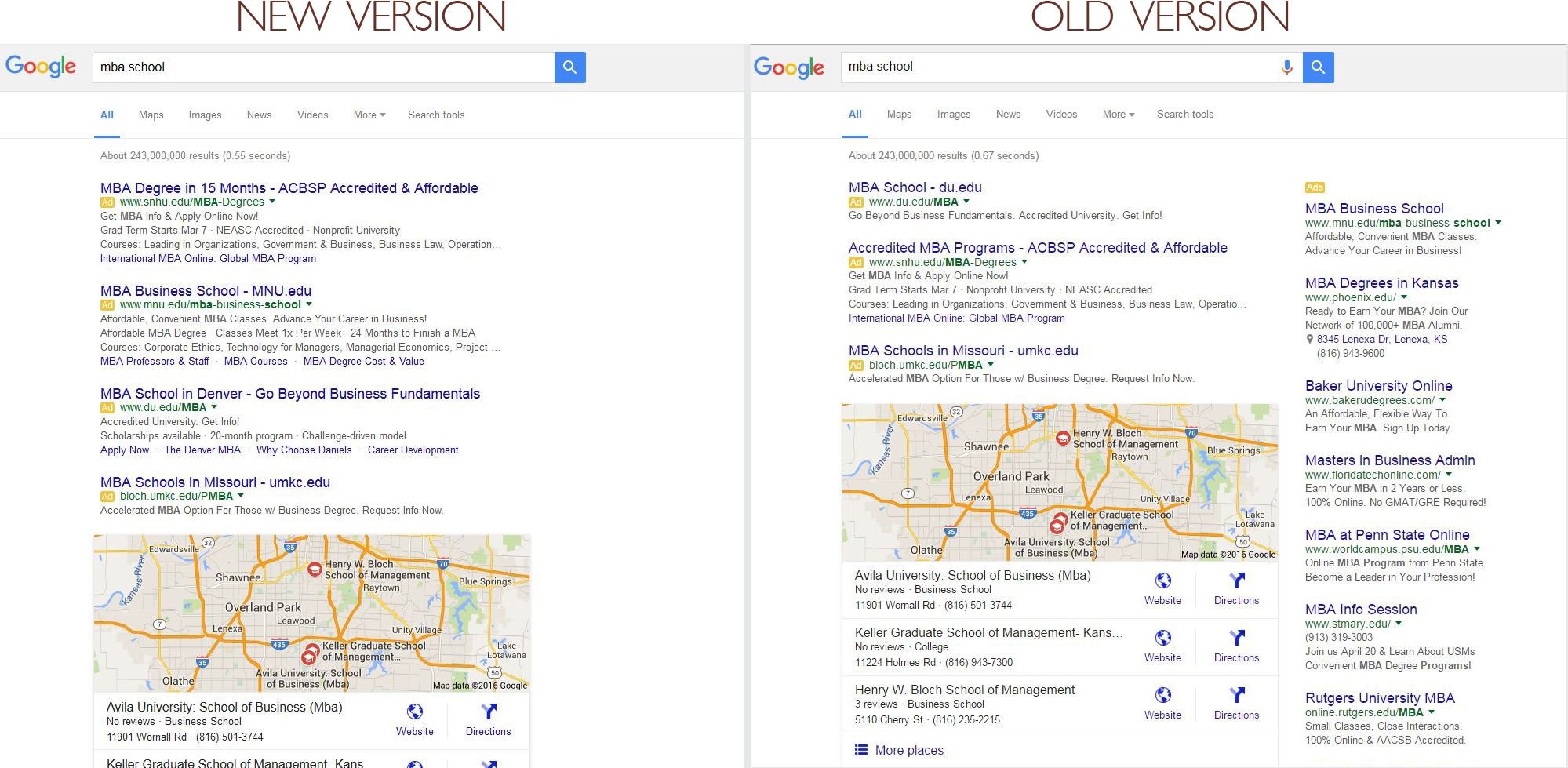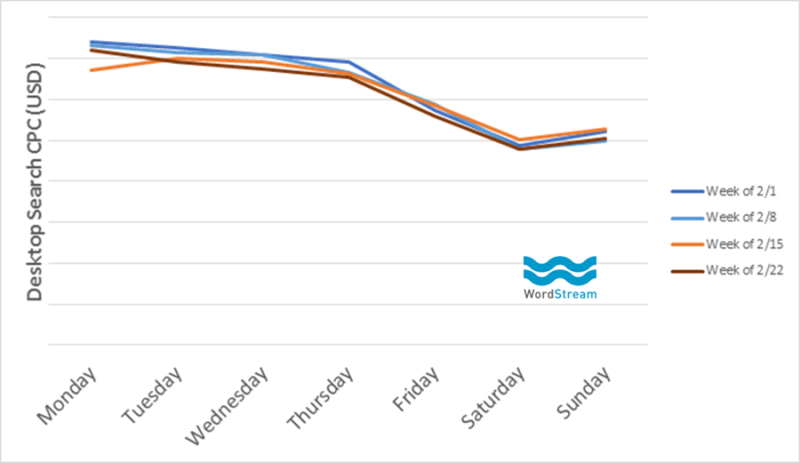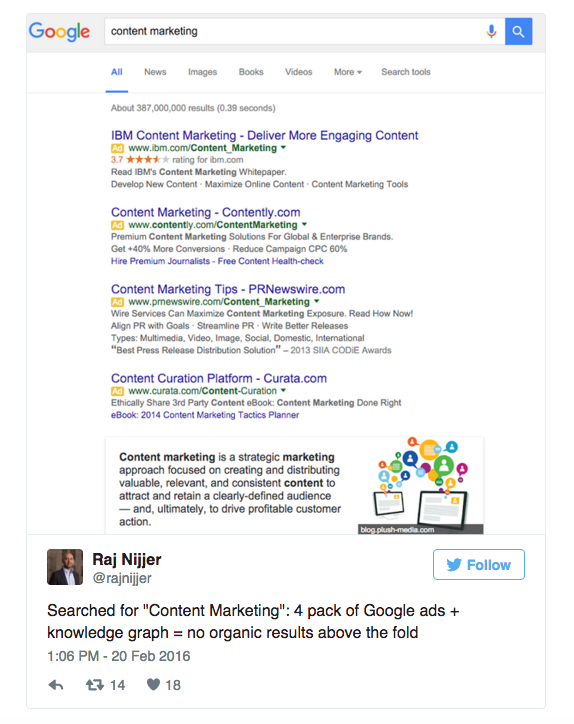We’re about a month past the latest Google change (and subsequent panic for search marketers) – the removal of ads from the right-hand side of SERPs. So, what exactly has changed?
Well, if you’re part of the decreasing population using your desktop to search Google, you may have noticed a more streamlined, cleaner experience.

Yes, gone are the days of 11 Google AdWords displaying with your search query. Instead, there’s now a maximum of four ads that can display above the fold, and only three that will display at the bottom of the page. However, there is a caveat to these numbers. Google does not guarantee that fourth position at the top – it’s reserved for searches that are “highly commercial queries” such as those for hotels, car insurance, or, in the example above, mba schools.
Pay to Play?
With fewer positions above the fold, search marketers immediately anticipated pressure for higher bids, in order to appear at the top. However, the first month’s data is proving very little change in CPC (cost-per-click), according to a test conducted by Wordstream. There has been a decreased number of ad impressions, but that’s to be expected with four fewer ad positions.

The Biggest Loser
Unfortunately, what appears to have been most adversely affected by this latest AdWords change is organic search. Not only did organic search results get pushed down one more position with the addition of a fourth ad, but they also trail behind Google features such as locations and knowledge graphs. As Raj Nijjer of Yext demonstrated in the screenshot below, not a single organic search result appeared above the fold with his query for “content marketing.”

Nobody Panic
While this latest change to Google AdWords is something to monitor, it’s not a reason to panic. And it’s certainly not a reason to back out of SEM or SEO efforts. In fact, it’s a great time to dig into your performance reports and make sure you’re doing all you can to be as relevant as possible so you’re rewarded with top positions in paid and organic results.
For starters, if you’re running a paid Google AdWords campaign, the new format now affords each ad the opportunity to show helpful information such as call extensions, sitelink extensions, and callouts. These ad extensions help make your content richer and more appealing to users, increasing the likelihood that your ads are clicked.
And, if you’re not running a paid search campaign, you need to put even more attention on your website’s title tags, meta descriptions, and alt image tags. Even though organic results now appear even lower on SERPs, there are still many searchers that skip over ad placements in favor of organic results, and Google favors listings that are highly relevant to their users’ search queries.
Conclusion
With the world at our fingertips, it’s time to embrace the changes that are intended to improve our searches and our experience. If you’re interested in learning more about Stone Ward’s capabilities to improve your paid and organic search results, contact Lucie Pathmann at lpathmann@stoneward.com or (501) 604-6108.

